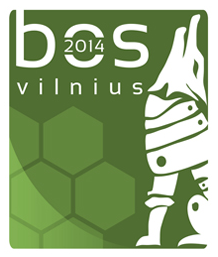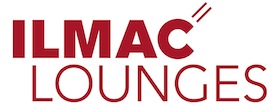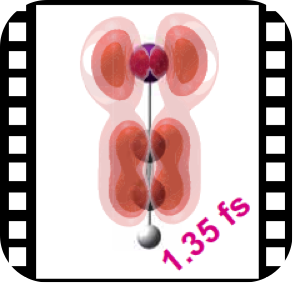SCS Lectureships: Prof. Peter R. Schreiner, Universität Giessen (Germany)
Prof. Peter R. Schreiner, Universität Giessen (Germany)
Mon, 17.03.2014 - Fri, 21.03.2014
«Enantioselective Multicatalysis - Retrocatalysis»,
«Nanodiamandoids as Next-Generation Carbon Materials» and
«Tunnelling control of chemical reactions»
Host: Prof. Thomas Bally, University of Fribourg
Mon, 17.03.2014, 16:15
«Enantioselective Multicatalysis - Retrocatalysis»
University of Geneva, Sciences II, Lecture Hall A100
30, Quai Ernest Ansermet, 1211 Geneva
Tue, 18.03.2014, 17:15
«Nanodiamandoids as Next-Generation Carbon Materials»
University of Fribourg, Department of Chemistry, Grand Auditoire
Chemin du Musée 9, 1700 Fribourg
Wed, 19.03.2014, 16:30
«Enantioselective Multicatalysis - Retrocatalysis»
University of Berne, DCB, Lecture Hall EG16
Freiestrasse 3, 3012 Berne
Thu 20.03.2014, 17:15
«Tunnelling control of chemical reactions»
EPF Lausanne, ISIC, Lecture Hall CH G1 495
EPFL SB ISIC, 1015 Lausanne
Fri, 21.03.2014, 17:00
«Enantioselective Multicatalysis - Retrocatalysis»
ETH Zurich, Hönggerberg, HCI J 7
Vladimir-Prelog-Weg 10, 8093 Zurich
Website: scg.ch/scs-lectureships
David Spichiger, SCS
10.03.2014
Balticum Organicum Syntheticum (BOS14)
 Balticum Organicum Syntheticum (BOS14)
Balticum Organicum Syntheticum (BOS14)
July 6-9, 2014
Vilnius, Lithuania
BOS2014 highlights talks on organic chemistry by a mix of academic and industrial chemists in Vilnius, Lithuania, including the 2010 Nobel Prize winner Prof Ei-ichi Negishi .
Attendance is limited to enable all participants to interact in an intimate setting including an opening reception and conference banquet. Topics typically include total syntheses, methodology, pharmaceutical chemistry, catalytic chemistry and other related topics. The conference series rotates between the capitals of the Baltic States and has a large percent of students and Baltic scientist participants.
More information on: www.boschem.euDavid Spichiger, SCS
07.06.2014
SCNAT/SCS Chemistry Travel Award 2014
The Platform Chemistry of the Swiss Academy of Sciences (SCNAT), the Swiss Chemical Society (SCS) and the Swiss Society for Food and Environmental Chemistry (SSFEC) announce the ‘2014 SCNAT/SCS Chemistry Travel Award’.
The award includes a contribution of CHF 750 towards the cost of active participation (poster or oral presentation) at an international conference in the field of the chemical sciences. A total of 45 awards will be distributed to selected doctoral students from Swiss Universities and Swiss Federal Institutes of Technology. Selection will be based primarily on scientific accomplishment and on the submitted conference abstract.
Further information and application form can be found at: www.chemistry.scnat.ch/travel_award
Applications should be submitted by 31 March 2014.
David Spichiger, SCS
05.03.2014
ILMAC Lounges: Meet the Community
Thematic Presentation Sessions - Product Shows - Social Events & Networking
Messe Basel, September 23-25, 2014
 ILMAC Lounges, the Swiss Platform that is provided by the organizers of the very successful New-Lounges in Stuttgart. Register today and profit from the all-inclusive exhibitor/presenter pagackes.
ILMAC Lounges, the Swiss Platform that is provided by the organizers of the very successful New-Lounges in Stuttgart. Register today and profit from the all-inclusive exhibitor/presenter pagackes.
The ILMAC Lounges presents a top-class programme assembled with representatives from public authorities, exhibitors and users.
The evening events spent together with trade visitors and exhibitors are an ideal opportunity for small talk and in-depth discussions regarding specific programme items.
The programme includes:
- Presentation sessions with specialised presentations for newcomers and experts
- Panel discussions for sharing experiences
- Demonstration areas for doing it yourself - "learning by doing"
The programme will be published on the ILMAC Lounges webpage as of June 2014.
David Spichiger, SCS
03.03.2014
SCS Fall Meeting: Call for Contributions open until May 22, 2014
 SCS Fall Meeting
SCS Fall Meeting
University of Zurich, September 11, 2014
Dear Member of the Swiss Chemical Society
The Call for Contributions for the 2014 SCS Fall Meeting is now open, and researchers from all areas of chemistry are invited to submit a poster or an oral contribution to be presented at the largest annual scientific event in Switzerland. Over the past few years, the Fall Meeting has become a very popular event, and we again expect close to one thousand participants.
Apart from scientific papers presented as a poster or as an oral contribution in nine parallel sessions, there will also be lectures from distinguished scientists, including a Nobel Laureate. Prizes will be awarded for the best oral presentations and posters. There is also a Commercial Exhibition.
The Meeting will take place on Thursday, 11 September 2014 and will be hosted jointly by the ETH Zürich and the University of Zürich (Irchel Campus). For more information, please visit scg.ch/fallmeeting2014.
The deadline for submission of scientific contributions is 22 May 2014.
We are looking forward to see you at this year’s Fall Meeting!
Hans Peter Lüthi and Ferdinand Wild
Co-chairmen of the Organizing Committee
David Spichiger, SCS
25.02.2014
Page 156 of 304

